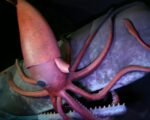It sounds like something out of a cartoon, but it’s no joke. Colorado Parks and Wildlife is warning residents after bears broke into two cars near Telluride last week—reminding folks that these curious creatures aren’t just roaming the woods, they’re sniffing out snacks in your driveway.
And once they’re inside? Well, they’re not exactly gentle guests. One bear reportedly tore through upholstery and panels trying to get back out. CPW says it’s not just about damage—it’s about safety.
Bears Know How to Get In. Getting Out? Not So Much.
Colorado’s black bears have learned the ropes. They can open unlocked car doors and even manipulate handles with surprising ease. It’s not rare for them to nose their way into trouble when they catch a whiff of something tasty.
The problem, CPW says, is once they’re in, panic sets in. Bears trapped inside cars often claw at windows, slam into doors, and destroy dashboards trying to escape.
One sentence is enough: the damage isn’t cheap.
It’s also a stressful ordeal for the bear, which increases the chance of injury or conflict with people later on.

The Lure of Fast Food Wrappers and Energy Bars
To a bear, a week-old granola bar or a drive-thru bag under the seat can be just as enticing as a full cooler. That’s why CPW keeps hammering home the message: if it smells like food, it is food.
Does that mean you should worry every time you park at a trailhead or camping spot?
Yes. Yes, it does.
CPW officials say even urban neighborhoods and grocery store parking lots have seen bear visits. Once a bear learns it can get a reward from a car, it’s more likely to try again.
Here’s what they say you should never leave inside your car:
-
Food (even sealed)
-
Trash
-
Coolers, empty or not
-
Air fresheners with fruity or sweet scents
-
Pet food or treats
Even toothpaste and lip balm can attract attention. It doesn’t take much.
Lock It Up or Pay Up: A Look at the Cost
So what’s the damage when a bear decides to play locksmith? It adds up fast. CPW has collected data over the years from various insurance claims and owner reports.
Here’s a rough breakdown of common costs when bears get stuck in vehicles:
| Damage Type | Average Cost (USD) |
|---|---|
| Interior Upholstery | $600 – $1,500 |
| Door Panels/Handles | $400 – $1,200 |
| Electronics/Wiring | $800 – $2,500 |
| Windows | $200 – $700 |
| Full Vehicle Total | $2,000 – $6,000+ |
And that’s not accounting for lost time or insurance deductibles.
Sometimes, the car ends up totaled—not because it can’t be fixed, but because the repairs just don’t make sense financially.
Bear Encounters Aren’t Just Forest Folklore Anymore
These aren’t just one-off incidents in the middle of nowhere. Bear activity is increasingly common in towns and suburbs near the Rockies.
In the Telluride area alone, CPW responded to nearly a dozen bear incidents last summer. Two of them involved bears entering cars—both times, the cars were unlocked.
In one recent case, a bear got into a Subaru, got stuck, and thrashed so violently that it cracked the windshield from the inside. Nobody was hurt—but the car? Wrecked.
One-sentence reality check: This is happening more often than you think.
CPW has tracked similar cases across Grand Junction, Boulder, and even near Denver’s outskirts.
What to Do If You Run Into One
Say you walk up to your vehicle and spot a furry intruder inside. What now?
Don’t open the door. Don’t approach. And definitely don’t try to film a TikTok.
Instead, here’s what CPW recommends:
-
Stay calm and back away slowly.
-
Give the bear space to leave on its own—if possible.
-
Call CPW immediately to report the incident.
-
If the bear appears stuck or in distress, authorities will respond with trained personnel.
They also warn against chasing bears away or using loud noises. It could make things worse.
Even if it’s a minor sighting, they want it reported. Why? Because early reports help wildlife managers track bear behavior patterns—and potentially prevent escalation.













